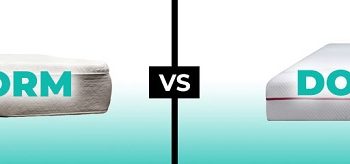
How to Choose a Mattress in 5 Easy Steps (2024)
We are owned and operated by GoodMorning.com. We hire 3rd-party engineers and use public data to rate mattresses on over 30 criteria that we believe are important. Brands we own—Douglas, Juno, Octave, Logan & Cove, and Novosbed—are reviewed and advertised where indicated. Views expressed here are our opinions only. Full details.
Choosing the right mattress can be confusing, expensive, and time consuming. It’s a decision that requires careful consideration and research, especially when you consider that a new mattress is a long-term investment in something incredibly important: your sleep.
If you didn’t already know that there are hundreds of mattress brands to choose from, chances are it didn’t take long for this overwhelming fact to become apparent. You have probably also seen at least three mattress ads today on Facebook or Google, on top of all the banner ads following you around on your favourite news, entertainment, or sports websites.
The ability to choose between hundreds of mattresses from the comfort of your own home is great; however, you should always ask yourself the following questions before pulling out your credit card in store, or clicking “Add to Cart” on your computer.
Table of Contents
(jump to any section by clicking below)
Step 1: Do I really need to buy a new mattress?
With so much information available online, you can start your research from the comfort of your own home. First, find a mattress that suits your body, your sleeping position, and your budget. Best of all, if you find one you like from an online mattress company, chances are it comes with a sleep trial. Why is that so important? Because if you decide it isn’t right for you, you can have the mattress picked up, get all of your money refunded, and now you can try the next one on your list. Sounds easier that haggling with a commission salesperson, eh?
Step 2: How much should I spend on a new mattress?

One of our editors here at Mattress-Reviews.com visited a local department store in search of a new mattress. Never mind the annoying sales people trying to get you to buy. But it was the price alone that caught his attention. One thing is for sure: a mattress should not cost more than $2,000. He said roughly 80% of the mattresses at this location exceeded that price, many by a considerable margin.
Times have changed. Look online for your next mattress and decide on a realistic budget that works for you. Here are some helpful hints:.
- Unless you’re a college student or working with a limited budget, don’t consider any mattresses below $500 (queen size). Most of these mattresses consist of poor-quality materials and often will have been manufactured in China.
- Many high-quality mattresses are available from $800 to $1,400 dollars.
- If you choose to purchase a foam or hybrid mattress, make sure you know the densities of the foam used. Cheaper foam is often a lower density. Remember the old adage: “Buy nice, or buy twice.”
Speaking of quality of materials, it’s important to educate yourself on the most common choices so you can be sure you’re getting the most bang for your buck. We’ve gone to great lengths to a provide detailed summary of what materials are used for each of the mattresses reviewed on this site. (Find this information in the “Mattress Construction” section in any article of our Full List of Mattress Reviews.)
Step 3: What types of mattress are there?
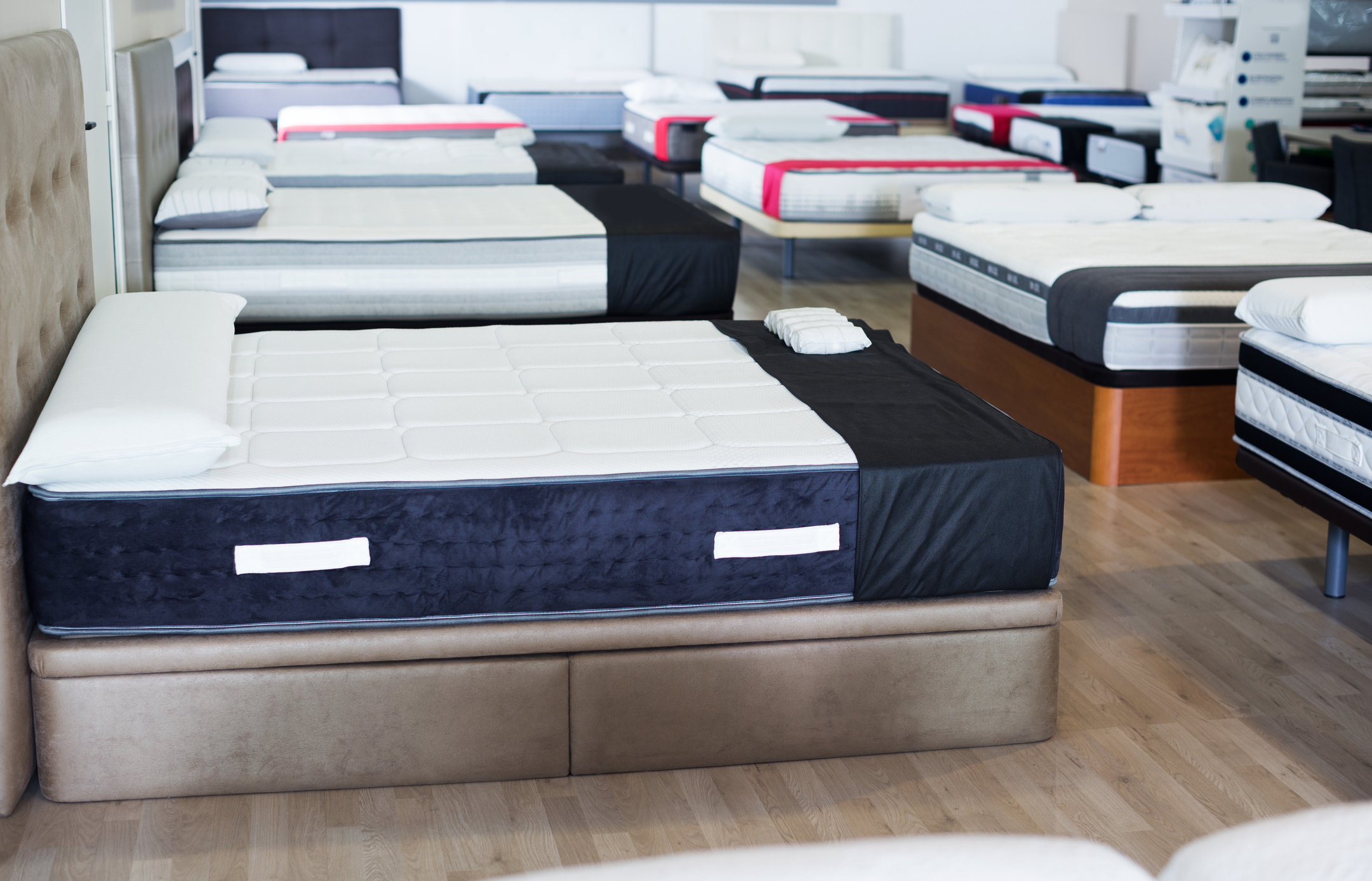
There are about a handful of different ways manufacturers use to build a mattress, and many companies combine elements between construction methods to create hybrid forms. So where do you start? First, it helps to learn the benefits of each type before deciding on what’s best for you.
Here is a quick overview of the four most common mattress types:
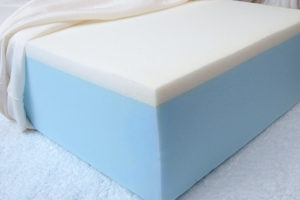
Foam
Foam has quickly become the preferred mattress type by online shoppers. It’s easy to see why. Memory foam is arguably the most comfortable, contouring, and responsive of all the mattress types. But there are a few distinctions worth noting between these popular picks. For starters, mattresses containing higher-density memory foams are more expensive to manufacture. As a result, very few of the bed-in-a-box companies choose to use it. However, premium retailers like Octave still use higher-density memory foam because it provides a slower-responding feel, as well as additional durability and longevity.
The potential downside? Memory foam may retain heat, depending on how it’s manufactured, and whether it’s been designed with cooling properties or air canals. So be sure to take this into consideration and look for memory foam mattresses that also provide moisture-wicking and cooling technology like the Octave mattress, our Top Pick for a Cooling Mattress in Canada. Its memory foam layer is infused with copper for rapid heat dissipation and with a proprietary phase-change material that ensures the mattress temperature stays within a comfortable range.
Alternatively, consider a medium density cooling-gel foam mattress – the Douglas mattress is a fine example, and our Top Pick Overall.
Who Benefits Most from a Memory Foam Mattress?
Those looking for pressure-point relief for their back, shoulders, and hips should consider a memory foam mattress. Also, if you crave a body-contouring and motion-isolating mattress (so your partner doesn’t wake you up each time they change sleep positions), then you definitely won’t regret choosing memory foam.
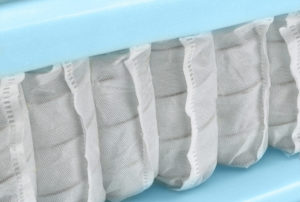
Hybrid
Next on our list is hybrid mattresses. These mattresses truly are the best of both worlds. You get the support and bounce that many people value in spring mattresses, while at the same time getting to experience the soothing comfort of memory foam.
Be sure to pay attention to how much memory foam is used in a hybrid mattress. Too much foam and you could sink in too far, causing the support of the springs to become a non-issue. Too little foam and you may begin to feel the metal springs press into your back, no one’s idea of a comfortable night’s sleep.
Who Benefits Most from a Hybrid Mattress?
Those interested in a mattress that offers the feel of memory foam while maintaining the support a spring mattress are likely to prefer this type of bed. Edge support, motion isolation, and bounce all rate highly with hybrid mattresses. So if you sit on the edge of your bed in the morning, sleep with a partner, or have an active sex life, then a hybrid mattress should rank near the top of your list.
The Logan & Cove mattress is our Top Pick for a Hybrid Mattress in Canada, featuring multiple layers of foam and individually pocketed coils.
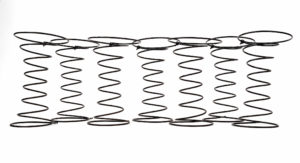
Innerspring (Coils)
Innerspring mattresses are what comes to mind for most people when they think of a traditional bed. Chances are you grew up using a spring mattress, had one in college, or have slept on one at mid-range hotels. They are generally less expensive to manufacture but do last a long time.
Who Benefits Most from An Innerspring Mattress?
Those who want durability, some bounce, good support, and impressive airflow (cooling) should consider an innerspring mattress. The edge support on most spring mattresses is also impressive.
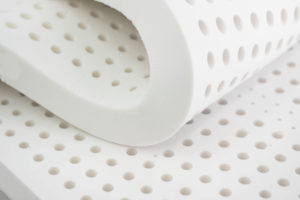
Latex
Latex mattresses are another good option. A natural latex mattress is derived from the rubber tree. It gives off a milky white sap that is processed with a few other ingredients to transform the mix into rubber. The latex used can be synthetic or natural. Most latex mattresses consist of a blend of both. Natural latex is more environmentally friendly, but it is expensive to manufacture. Expect these mattresses to cost over $2,000.
Who Benefits Most from A Latex Mattress?
Those who want bounce, cooling, durability, no smell, and a mattress that is made with eco-friendly materials (only natural latex). For sleepers looking to get an excellent latex mattress, we recommend the Octave Mirage.
Step 4: What is the Best Mattress for my Sleep Position?
Depending on if you are a side, back, or stomach sleeper, you’ll find that your mattress needs change. There is a mattress ideal for every preference, so think about the sleep position you prefer in order to get a reasonable prediction of which mattresses your body will best respond to.

Side Sleepers
Side sleepers must be very careful to avoid mattresses that are too firm or too soft. Too much or too little sinkage in mattresses may not alleviate pressure points that build up around the neck, shoulders, and hips.
The Octave mattress uses high-density memory foam, which has a slower response to your body weight, so you’ll feel like you’re easing into the mattress. It’s also sectioned into five support zones, meaning you’ll benefit from highly targeted pressure relief on the neck, shoulders, and hips.

Back Sleepers
Typically, a medium-firm mattress is best for those who suffer from back pain or for those who simply prefer sleeping on their backs. Most importantly for back sleepers, you need proper support. We’ll now expand on this topic.
The best mattresses for back sleepers are usually memory foam and latex mattresses. Both feature slow-response foams designed to slowly contour to the shape of your body. The end result? A mattress that supports the natural curvature of your spine. Back sleepers are often worried about sinkage. But remember, a little sinkage is just fine so long as you get a mattress with high-density foams designed to contour perfectly your body.
The Douglas mattress has a medium firmness level designed to hit that sweet spot that back sleepers love most in a mattress. Thanks to the ecoLight® cooling gel foam comfort layer, back sleepers will appreciate the top layer of high-density memory foam that is specifically designed to cradle and support the body. At the same time, the next layer of premium Elastex® foam mimics the reactive and supportive properties of natural latex. For a back sleeper, this is an excellent combination.

Stomach Sleepers
Most experts agree that sleeping on your stomach should be avoided when possible, as the natural curvature of the spine is not supported. This can add stress and discomfort to your muscles and joints. That being said, many still prefer this sleep position.
When shopping around for the best mattress for stomach sleepers, there are a few things to keep in mind. Typically, a firmer mattress is best since there will be less lumbar sinkage into the mattress. Most importantly you need proper support to help maintain the angle of your spine
If you enjoy a classic memory foam feel but don’t want the contouring or sinking feeling that often accompanies it, then consider a hybrid mattress such as Logan & Cove. This mattress provides the comfort of memory foam while still offering proper spinal alignment for stomach sleeping.
The Logan & Cove mattress is especially effective because it specializes in targeted lumbar support. The hundreds of zonal pocketed coils coupled with a cooling memory foam make this mattress supportive yet extremely comfortable. It also features a silk blend pillow-top fill and a plant-based-fabric cover, which due to its breathability is ideal for stomach sleepers. When you’re used to resting the side of your face against your bed, enhanced breathability goes a long way to a comfortable night’s sleep.
Step 5: What is the best mattress for my body weight?
Okay, last but not least, we must address the factor of body weight. Different body weights require different levels of firmness and support. Fortunately, there are online mattress companies who use algorithms to make recommendations based on your weight and help take the guesswork out of deciding which firmness option is right for you. There are also online mattress companies who offer a split queen- or split king-size mattress option. Split options are perfect for couples who may have substantially different body weights.
To make it as easy as possible to understand, here’s a guide for choosing the right mattress option based on three body-weight categories:

Lightweight sleepers (less than 150 pounds)
If you fit this category, consider a soft to medium-firm mattress that sits around a 3 to 6 on the firmness scale. Lighter sleepers don’t sink as deeply into a mattress. Browse our Reviews and find a bed that falls within this firmness range. Our firmness ratings are calculated by third-party engineers who we commission for testing on this website. “One-size-fits-all” mattresses like the Douglas are a great fit for more lightweight sleepers.

Average weight sleepers (150 to 200 pounds)
Most mattresses are designed and optimized for a person who weighs 180 lbs. A medium to medium-firm mattress is ideal for sleepers who fall into this weight range. The firmness rating that these sleepers should be looking for falls between 4.5 and 7 on the firmness scale. Mattress brands like Douglas, Logan & Cove, and Octave are ideal as they specialize in medium-firm mattresses that sit within this firmness range.

Heavier sleepers (200+ pounds)
The primary concern for heavier individuals is a mattress with too little support and too much sinkage. A medium-firm to firm mattress is ideal for this subgroup. The firmness rating heavier sleepers should look for is between 6 to 8 on the firmness scale. Firmer hybrid mattresses, like Logan & Cove, are a solid recommendation due to the reinforcing nature of their zonal pocketed coils. These coils are an extra gauge thicker in the central third of the mattress in order to help with support of the heaviest part of the body: the hips. The coils also contour to the body, allowing for comfort in every sleep position.
Summary: How to choose a mattress in 5 easy steps
We hope you enjoyed this detailed guide and recognize just how subjective mattress shopping can be. Everyone has different preferences and needs. But we trust these recommendations will help you find the mattress that suits you best. Here’s a brief recap of everything we’ve discussed so far.
Do I really need to buy a new mattress?
Your mattress could be due for an upgrade. Look online and see the options available to you. We have independent engineers test all of the mattresses we review on this website and share their unbiased findings to help people just like you find the most suitable bed for your needs.
READ MORE: How to get rid of a mattress
How much should I spend on a new mattress?
Simple. An excellent mattress should never cost more than $2,000. Pay attention to the quality of materials used, the density of the foam, the number of coils, and where it is made. North American-made mattresses offer the best quality on the market.
What types of mattresses are there?
What’s inside counts for a lot. Be sure to consider what mattress type best suits your needs. You might enjoy the support of an innerspring mattress, the contouring of memory foam, the bounce of latex, or perhaps a hybrid mattress that offers a blend of all three.
What is the best mattress for my sleep position?
The way you lie in bed will ultimately decide what firmness you should select for your next mattress. Side sleepers should look for a softer mattress, back sleepers should consider a medium firmness mattress, and stomach sleepers should focus on a slightly firmer mattress.
Does body weight influence my mattress options?
Lighter sleepers (under 150 pounds) should look for a softer mattress between 3 and 6 on the firmness scale. Average weight sleepers (150-200 pounds) should look at medium firmness mattresses rated between 4.5 and 7. Heavier sleepers (over 200+ pounds) should look for a mattress firmness of between 6 and 8 on the firmness scale.
To make things super easy, firmness ratings are listed in the top summary box of each of our Full List of Mattress Reviews, as well as our Mattress Brand Comparisons. We also have lists of the best mattresses, including the Best Canadian Mattresses.

